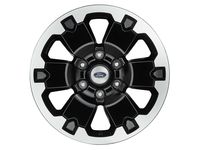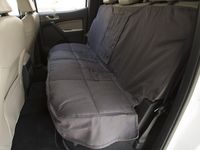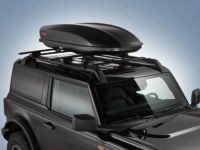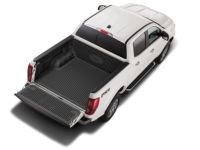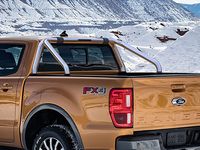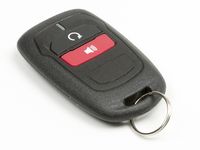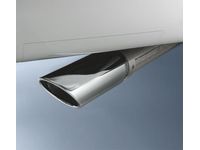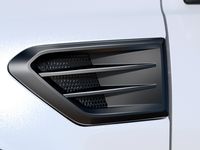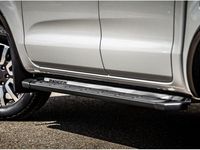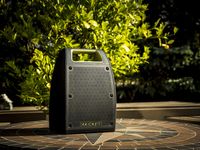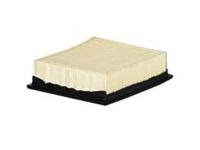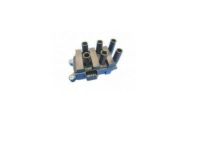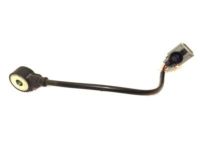

Why choose FordPartsGiant
- Optimal Shopping Experience
Want to buy parts for your vehicle? Look no further than FordPartsGiant.com, the best place for Ford Ranger genuine parts. For years, all of our Ford Ranger parts and accessories have been expedited directly from dedicated dealers and backed by the manufacturer's warranty, so buying from FordPartsGiant.com is always risk-free.
- Dedicated Customer Service
Our first-class customer service team is committed to providing you with the best assistance possible. Dedicated representatives are standing by to assist you by email, live chat, or phone. Every effort is made to ensure your order for OEM Ford Ranger parts arrives fast no matter your location in the nation, so your vehicle is up and running and back on the road.
- Unbeatable Prices
What makes us the best online source for Ford Ranger parts and truck parts? Our goal is to offer the lowest prices. You get giant savings shopping with FordPartsGiant.com. With a complete parts catalog, we cover a full selection of affordable OEM Ford Ranger parts and pickup parts with a huge inventory.
Popular Genuine Ford Ranger Parts
- Engine Parts View More >
- Chassis Parts View More >
- Electrical Parts View More >
- Body And Paint Parts View More >
- Lamps & Wiring Parts View More >
- Wheels & Brakes Parts View More >
- Fuel System & Manifolds Parts View More >
- Speedometer, Bumpers, Mirrors & Wipers Parts View More >
- Transmission Parts View More >
- Front Axle & Steering Parts View More >
Shop Genuine Ford Ranger Parts with FordPartsGiant.com
The Ford Ranger is a prominent series of pickup trucks that has been in production since 1982. Initially introduced in North America, it was later expanded to South America and Australia, with the most ubiquitous model being based on the T6 platform. The Ranger primarily focused on compact pickups from 1983 to 2012 in North America, transitioning to mid-size pickups in 2019. Mazda also developed a model based on the Ranger, replacing its own Courier series. The first-generation Ranger, developed to compete against the Chevrolet S-10, was typically a 2-door cab pickup with options of standard, long, and Supercab sizes. Standard features included rear-wheel anti-lock brakes and a four-speed manual transmission, later upgraded to five-speed. The second generation of the Ranger, launched in 1993, offered a choice between automatic and 5-speed Mazda M5OD-R1 manual transmissions, and engines ranging from 2.3L OHC I4 to 4.0L Cologne V6. The third-generation Ranger, introduced in 1998, was the first compact track model with two rear-hinged doors in SuperCabs. Its chassis was redesigned, with fully boxed frame rails replacing the full-length C-channel construction, and wheelbases extended to either 111.6, 117.6, or 125.9 inches, depending on the model. Production of this generation ended in December 2011.
According to Carcomplaint.com, Ford Ranger owners have reported a few common problems. The first involves engine misfires, accompanied by symptoms like slow acceleration, poor fuel economy, difficulty starting, bad gas mileage, and rough idle. The Check Engine Light may sporadically illuminate. To resolve these issues, it's recommended to inspect the spark plug, spark plug wire, oxygen sensors, EGR valve gasket, and throttle cable for possible replacement. The second problem lies with the suspension system, identifiable by rattling or squeaking noises from beneath the vehicle or difficulties with handling. The torsion bar might be the culprit. Routine maintenance of the Ranger is key, as waiting for component failure could be costly. Often neglected parts like headlights, crucial for visibility, and hand handles, providing safety and convenience for passengers, should also be given attention during regular maintenance checks.
Originating directly from Ford, OEM parts excel in quality, longevity, and fitment. They undergo severe quality testing, ensuring its safety, durability, and performance that matches your original parts. In contrast to inexpensive aftermarket auto parts, we provide a full range of OEM Ford Ranger parts, all backed by a manufacturer's warranty and offered at unbeatable prices. Our selection includes an extensive variety of genuine Ford Ranger parts, from radiators to headlights. Moreover, we guarantee a hassle-free return process and the fastest delivery service.
Ford Ranger Parts Questions & Answers
- Q: How to replace the Air Filter on 2000-2011 Ford Ranger?A: All air filter cover assemblies must be installed correctly or engine damage could occur. If the vehicle is driven in dust, the filter should be checked every3000 miles and replaced if it's dirty. In any case, the filter should be replaced at least every 30,000 miles, even if it looks clean. Loosen the hose clamp on the air intake duct, just after the MAF sensor on most models. Disconnect the MAF sensor electrical connector where necessary. Release the two locking clips/clamps on the cover. Lift off the cover while separating it from the air intake duct. Remove the air filter element by lifting it out from one edge. Wipe the inside of the air filter housing with a clean cloth. Place the new air filter element in the housing. Reinstall the cover and reconnect the air intake duct, note the tabs on one side of the cover. Press down on the cover to engage the locking clips or secure the clamps. Reconnect the MAF sensor, if necessary, and carefully tighten the hose clamp on the air intake duct.
- Q: How to check the primary and secondary resistance of a coil and replace it on 2000-2011 Ford Ranger?A: To check a coil's primary resistance, disconnect the coil's electrical connector and use an ohmmeter across the primary terminals. The resistance should be under 5.0 ohms. If it's a high or open circuit, the coil might be faulty. To replace the coil, disconnect the battery's negative cable, the ignition coil connector(s), and spark plug wires. Remove the coil's securing bolts and install the new coil. Coat the rubber boot interior with Silicone Dielectric Compound and insert the spark plug wires into the terminals. Reinstall the radio ignition interference capacitor if needed.
- Q: How to remove and install the knock sensor on 2000-2011 Ford Ranger?A: The knock sensor is found between the cylinder heads on V6 engines, and on the left side of the block on 2.3L engines. Disconnect the negative battery terminal cable. On 2.3L engines, disconnect the sensor harness, remove the mounting bolt and sensor. A new sensor is needed once the old one is removed. On V6 engines, remove the intake manifold and noise shield if necessary. Disconnect the sensor electrical connector, which varies in location depending on the model. Remove the sensor retaining bolt and sensor. Installation is the reverse of removal, ensuring the bolt is tightened securely.










































